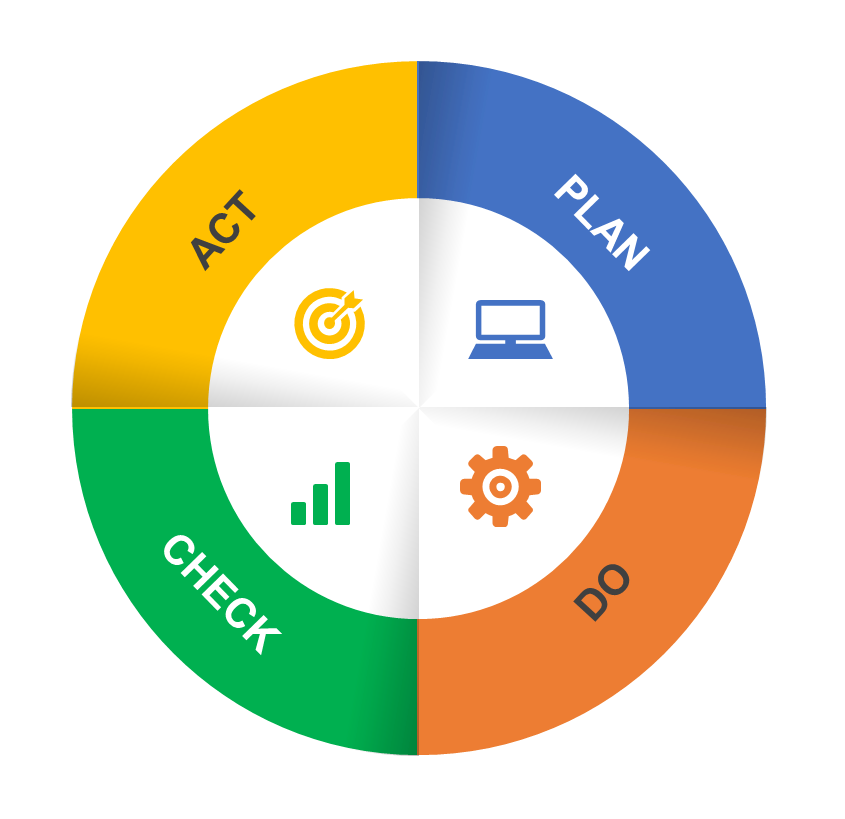Ergonomic Survey Methods: Collect Quality Feedback to Drive Ergonomic Change!
Written by: Amii Pereira, CCPE, Senior Ergonomist
Upcoming changes to the MSD (Musculoskeletal Disorder) Prevention Guideline in Ontario emphasize the importance of following the PDCA (Plan, Do, Check, Act) cycle as a method for implementing positive ergonomic change in the workplace. During the planning phase, collection of worker feedback is important to understand worker concerns, especially concerns that workers may not feel comfortable openly communicating to their supervisors. This feedback includes subjective data that can be used in conjunction with ergonomic assessments and injury data to drive ergonomic focus and change.

Options Inc. has reviewed the effectiveness of different ergonomic surveying methods. Through these reviews, we identified that the method of conducting surveys directly impacts participation levels. Maximizing worker participation is critical to ensuring all workers' perspectives are understood. A full data set can effectively assist in improving prioritization of risks and better support workplace ergonomic improvements. Through our evaluations, the following components have been identified as essential to conducting successful surveys.
1) Management commitment (Survey collection and action plan):
This commitment allows for effective organization of people, time, and equipment required to collect data from as many workers as possible. An increase in participation helps improve the validity of the data set collected. This ensures the information is representative of the worker population which intern helps guide focus for fixing problems accurately. Management commitment is also vital to support acting on the concerns brought forward through the survey in a timely manner.
2) Clear communication to workers:
Prior to conducting an ergonomic survey, clear communication related to the purpose of the survey, how the information will be used, and the plan for concern follow up is critical. This openness helps minimize worker concerns surrounding the use of the information and clarifies any misunderstandings surrounding the intent of the activity.
3) Survey completion during working hours:
Through our reviews, participation is highest when workers are given adequate time during working hours to complete the survey. During a recent study, workers were given up to 30 minutes away from their regular duties to complete an ergonomic survey. This approach on average resulted in 85% worker participation, 3% refusal with 12% absent throughout the course of the collection. Overall, this showed a 43% higher participation level than use of their traditional collection method, which was to complete the survey during a lunch break where the employer provided lunch.
4) Survey design and administration:
Worker surveys should be concise, user friendly, quick to administer and have an option for anonymity. Incorporating a section for open-ended feedback is important to allow workers to express opinions. From our experience, some of the most valuable information has been obtained in open-ended questioning such as new and upcoming trends of concerns that may not be currently known to the employer. Using reliable data collection techniques (i.e. computer based medium) may help avoid errors associated with copying/interpreting data, In addition, having a survey facilitator available to support worker’s questions during the surveying period, has shown a positive impact on participation.
Collecting quality feedback through a well-designed survey provides information critical to facilitating positive ergonomic change. Ergonomic changes driven from survey results can have substantial benefits on morale and ergonomic risk reduction. If you are interested in advancing your ergonomic surveying methods, please feel free to contact us.
Contact Us Back to Articles